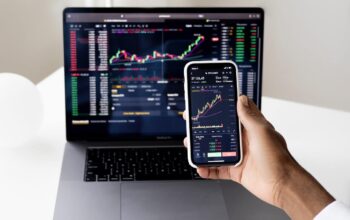Option traders evaluate overall market sentiment using a wide array of indicators at their disposal. Perhaps the two most important terms are the PCR ratio and Put-Call Volume. Though both terms may sound obvious, traders will find a fine distinction between them that will assist them in making informed decisions during uncertain market phases.
What Does the PCR Ratio Represent?
Traders use the put-call ratio (PCR) as a measurement tool for the trading volume of put versus call options. You can interpret it in simple terms since it tells you how many puts traders buy compared with calls. The formula is also easy:
PCR Ratio = Total Put Volume / Total Call Volume
An increase in the PCR ratio signifies that traders frequently buy more puts, usually understood as defensive or cautious sentiment. Conversely, a lower PCR ratio commonly reflects optimism among traders. But you should never take it out of context, especially with option trading, where strategies can be very complicated.
Understanding Put-Call Volume
While the PCR ratio examines puts and calls concerning each other, Put-Call Volume looks at the actual number of put-and-call contracts that traders trade during a period. While this gives a feel for raw activity in the market, it cannot tell the underlying sentiment: for instance, many might construe high call volumes as not always bullish—it depends on whether traders buy or sell such calls. In brief, Put-Call Volume represents activity, while the PCR ratio expresses meaning in that activity. Inevitably both are important, but they have assistant roles.
Relevance to the Young Professionals in India
Young professionals must realize the sheer importance of the specific indicators while exploring options trading investment in the Indian context. Just like the National Stock Exchange (NSE) and Bombay Stock Exchange (BSE), which generally operate at trading hours from 9:15 AM to 3:30 PM during which options and other derivatives realize all their major price actions, volume data, including PCR and Put-Call Volumes, emerge.
Notably, sentiments shift across this period, particularly opening but not closing under Indian markets, in which those sentiments could reflect the next day in the PCR. Young traders, therefore, should watch out for such marks of caution when interpreting such indicators.
The Role of National Holidays of MCX
Another critical area that traders might never think of when trading options is MCX holidays. Though the Multi Commodity Exchange (MCX) primarily serves for trading commodities such as gold, silver, and crude oil, its holidays can also have indirect repercussions on market liquidity or trader actions. On days when MCX closes but stock and option markets remain open, traders can see a decrease in overall market participation. Similarly, during national holidays when all markets close, global events can build pressure, influencing PCR and Put-Call Volume data when markets reopen. For young professionals trying to figure out market action sentiment from these instruments, they first need to track the holiday calendar so as not to make decisions based on murky data during such times.
What Should Really Matter?
Between the PCR ratio and Put-Call Volume, what truly matters depends on how traders interpret the bigger picture. Neither indicator should be viewed in isolation. It’s helpful to:
- Combine PCR ratio readings with price trends.
- Compare Put-Call Volume spikes with market direction.
- Be aware of trading hours in India and factor in global market cues.
- Keep track of MCX holidays and national market closures to understand gaps in sentiment.
Conclusion For young professionals venturing into options trading, indicators such as the PCR ratio and Put-Call Volume are necessary instruments, but they also need patience and context. The Indian market functions within time-honored confines when that space is affected by holidays, and gaps in sentiment will usually be reflected in these indicators. Therefore, staying updated and avoiding making hasty judgments based on a single number leads to more mature thought in trades instead.




